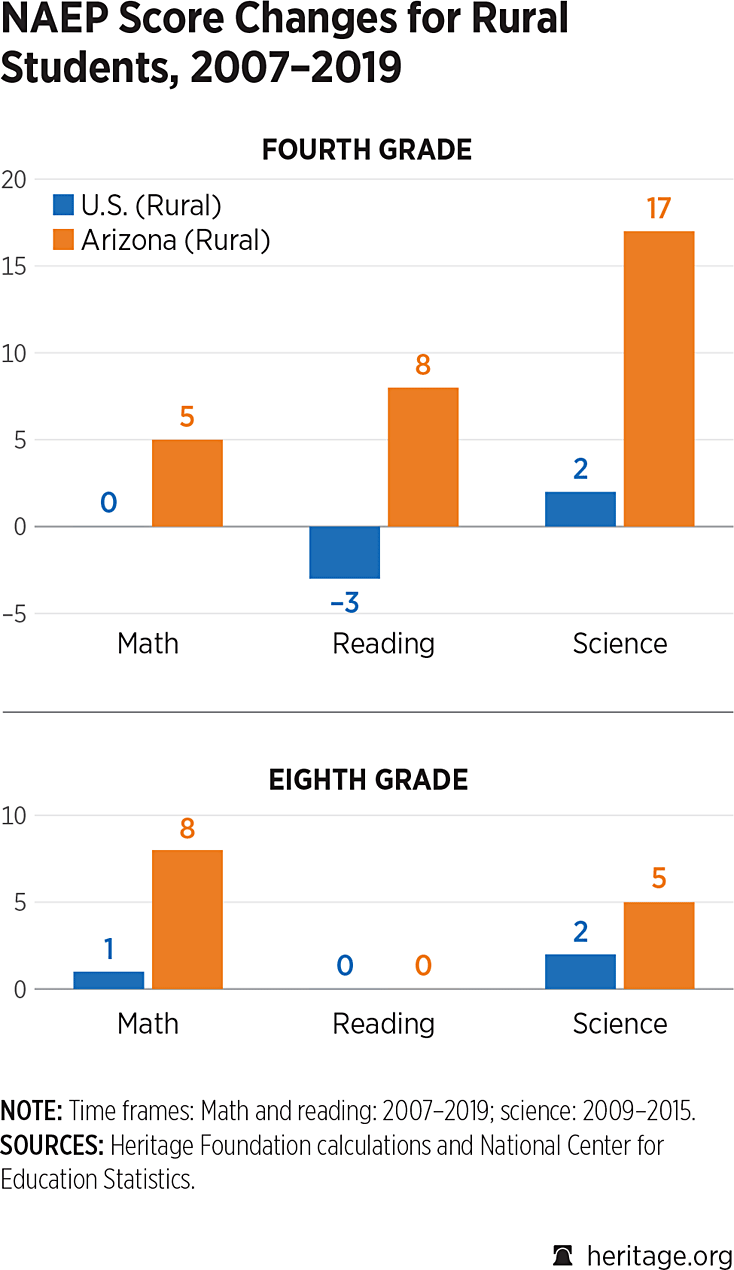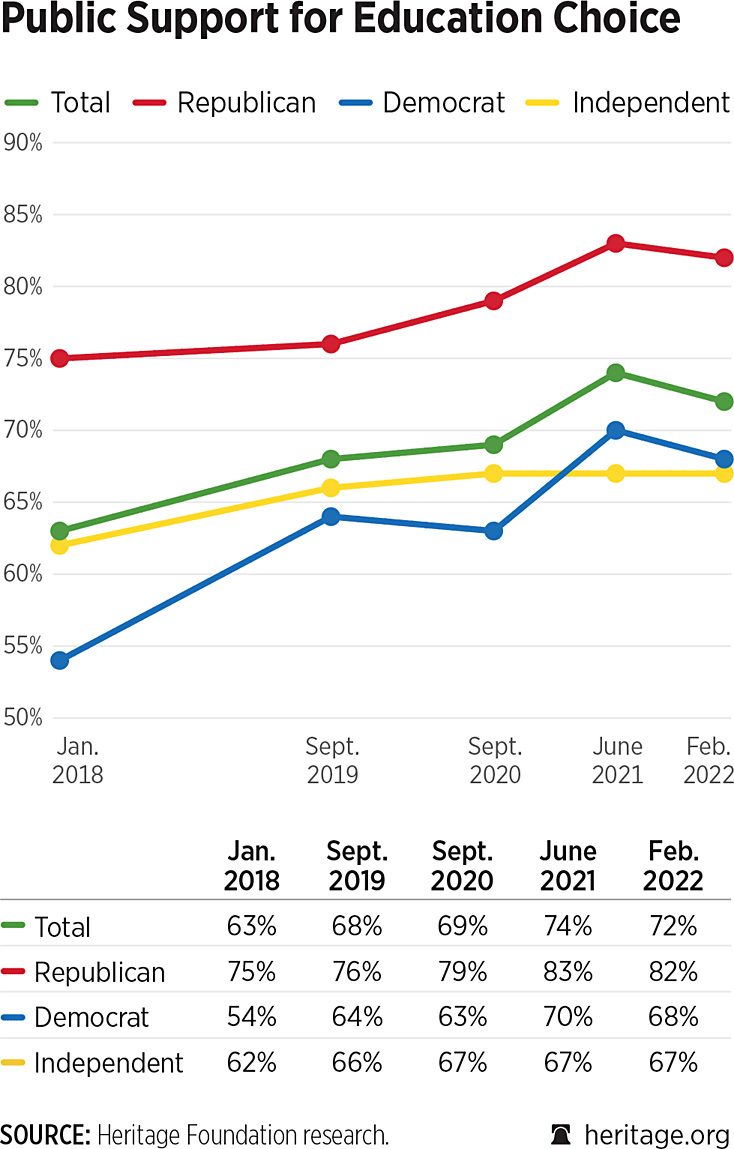THE ISSUE
Every child deserves the right to attend a school that can best meet his or her individual learning needs. Where the child lives should not be a limiting factor, and no one school is the best fit for every child who just happens to live nearby. Education-choice policies have the potential to expand education options for students in rural areas.
BACKGROUND
Rural areas have far more education options than commonly known—from private schools and charter schools to microschools and virtual learning.
- About seven in 10 rural families live within 10 miles of a private elementary school.
- While charter schools are scarcer in rural areas, they are more common in states with policies that foster the creation of charters in rural areas. In Arizona, more than eight in 10 students live in the same zip code as at least one charter school.
- High-quality virtual schools are available to anyone with a decent Internet connection. A 2021 survey by the Pew Research Center found that 72 percent of rural Americans report having a broadband Internet connection at home—up nine percentage points since 2016.
States with robust education-choice policies have seen a significant increase in education options in rural areas.
- Rural private school enrollment doubled in Florida over the past two decades and doubled in Arizona over the past eight years. Both states have robust education-choice policies, including K–12 education savings accounts (ESAs) and tax-credit scholarships.
- Rural areas are seeing the rise of micro-schools, a re-imagining of the one-room schoolhouse. For example the Prenda microschool network grew from a handful of children in Arizona in 2018 to 3,000+ students in 300+ microschools across six states in 2022.
Expanding education choice does not harm rural school districts. Indeed, the best evidence suggests that education-choice policies spur rural schools to improve.
- Arizona has the most robust education-choice policies in the nation—including a K–12 ESA for all students—and its rural schools are improving much more than the national average.


Education-choice policies, such as K–12 ESAs, are very popular, especially in rural areas.
- Public support for education choice is high. In a February 2022 RealClearOpinion poll, 72 percent of respondents supported school-choice policies.
- Support for choice policies is strong in rural areas, too. In the March 2022 Texas Republican primary, 88 percent of voters agreed that “parents should have the right to select schools, whether public or private, for their children, and the funding should follow the student.” Some of the highest levels of support came from the most rural counties in Texas.
- Likewise, a survey conducted in January 2022 found that 70 percent of rural Oklahomans supported school choice, while only 25 percent opposed it.
THE SOLUTION
K–12 ESAs allow parents to choose learning environments that align with their values and best meet their child’s individual learning needs. Nine states now offer ESAs and several more are working to enact ESAs to expand education opportunity for all.
Policymakers should make it easier to open and operate charter schools, especially in rural areas, by reducing barriers to entry for charter operators, allowing multiple charter authorizers, granting longer charters, and reducing red tape.
For more information, see Heritage’s “Rustic Renaissance: Education Choice in Rural America.”




